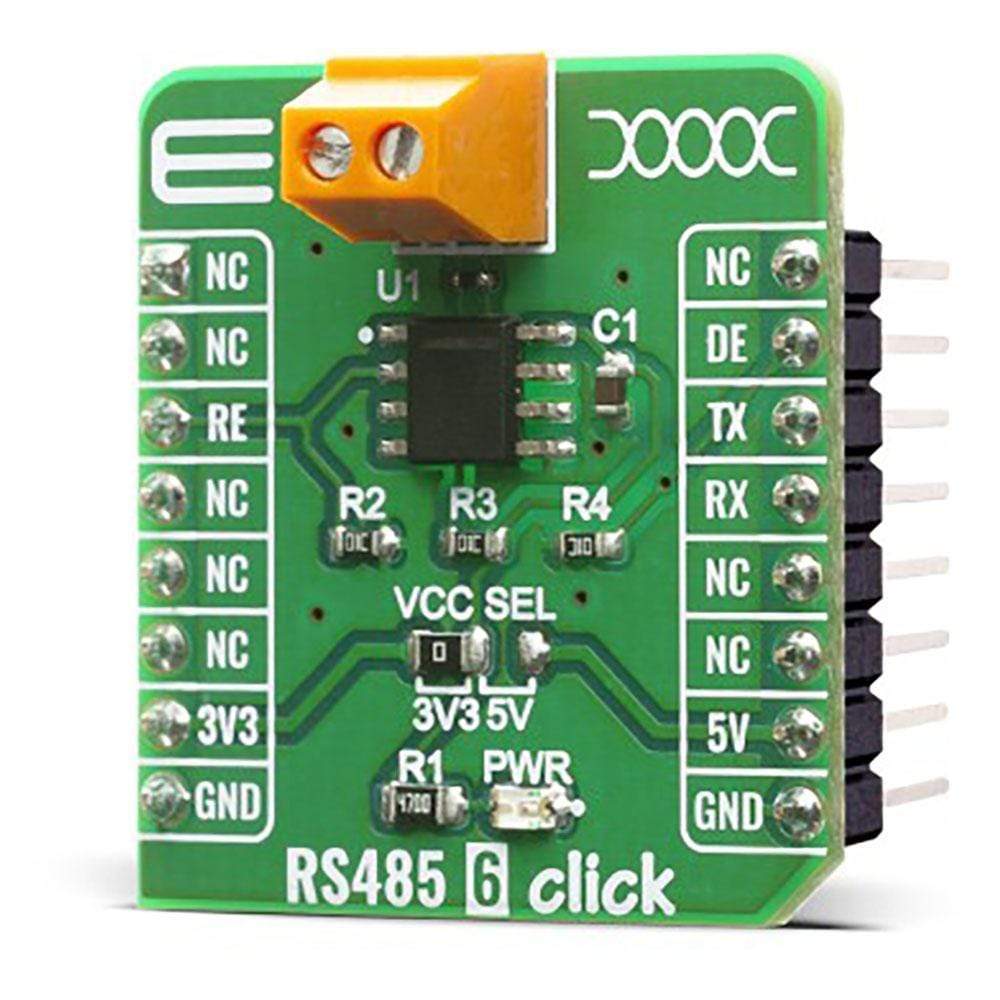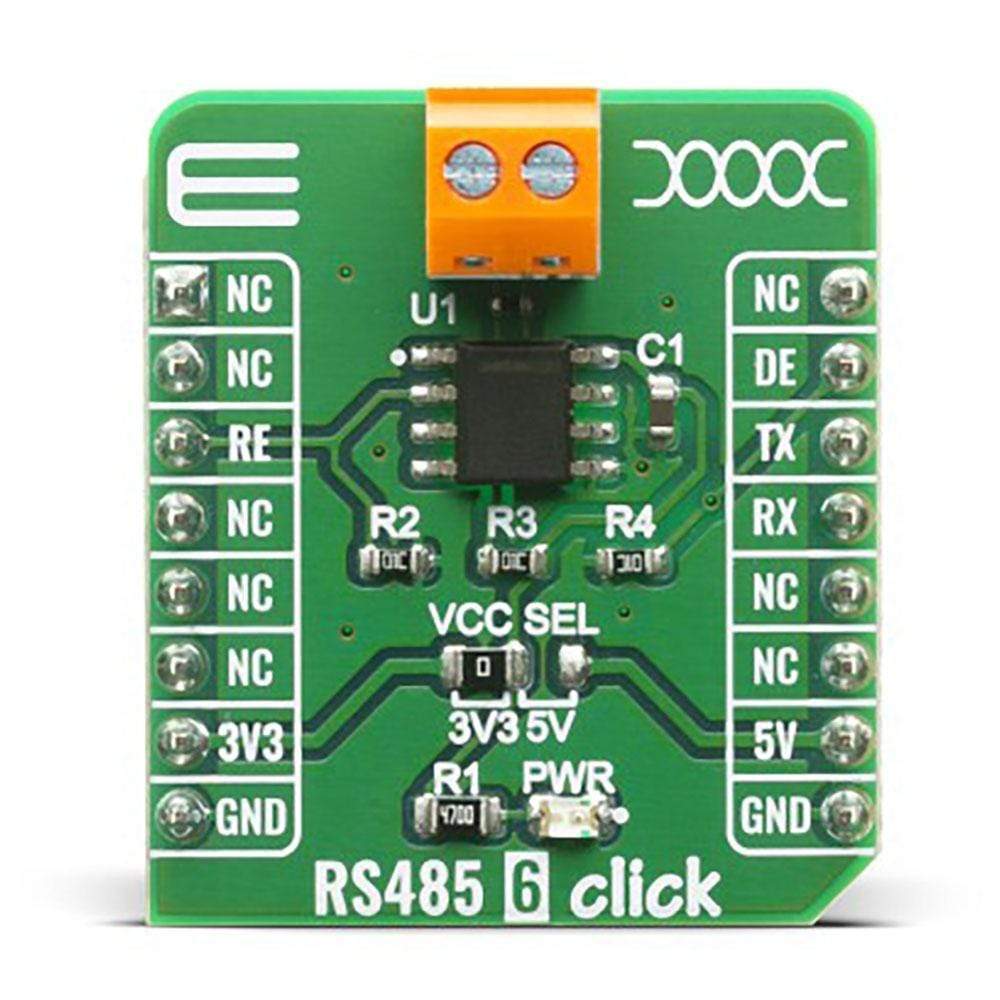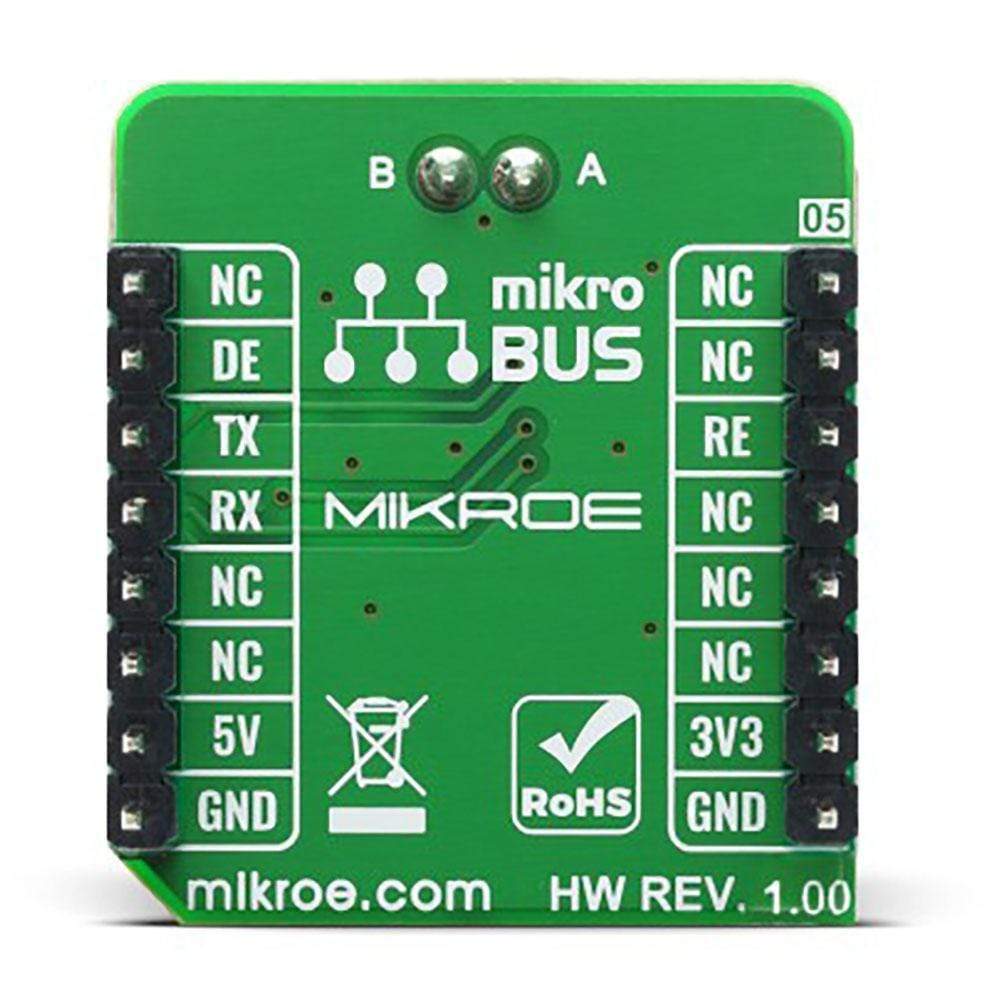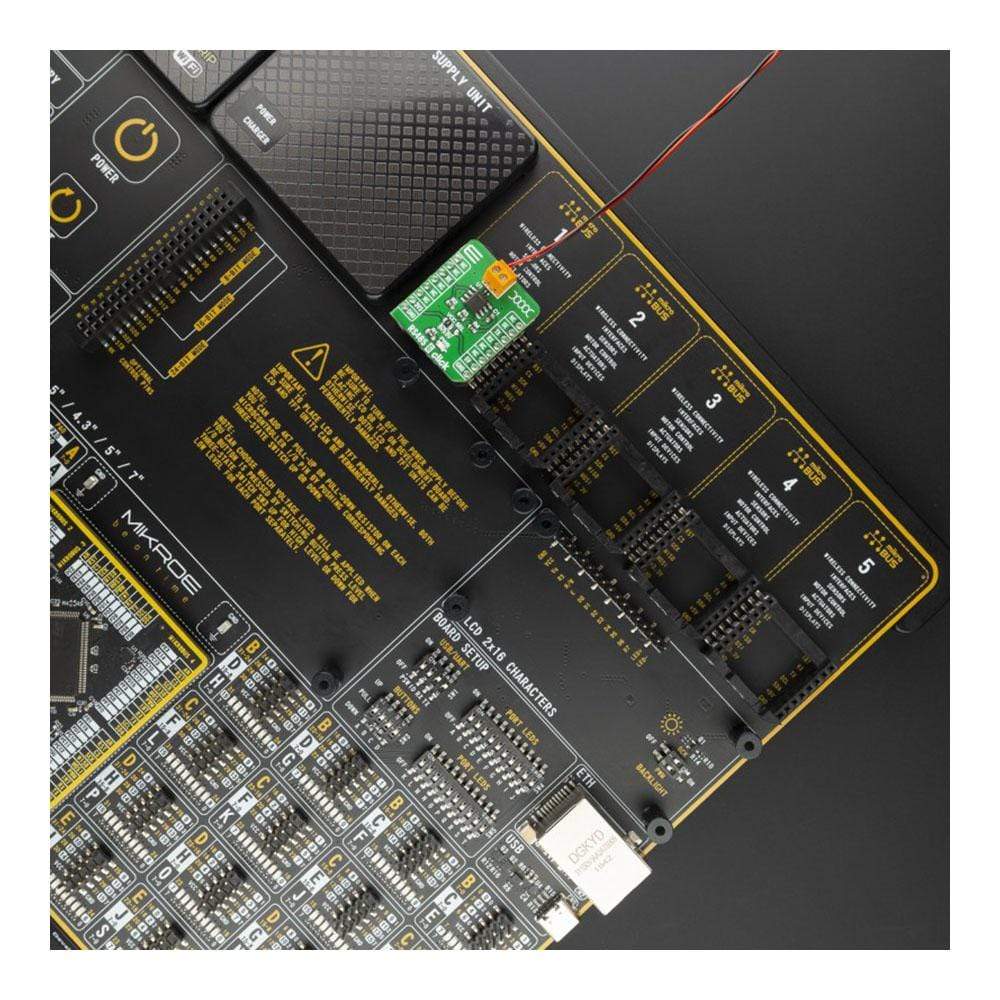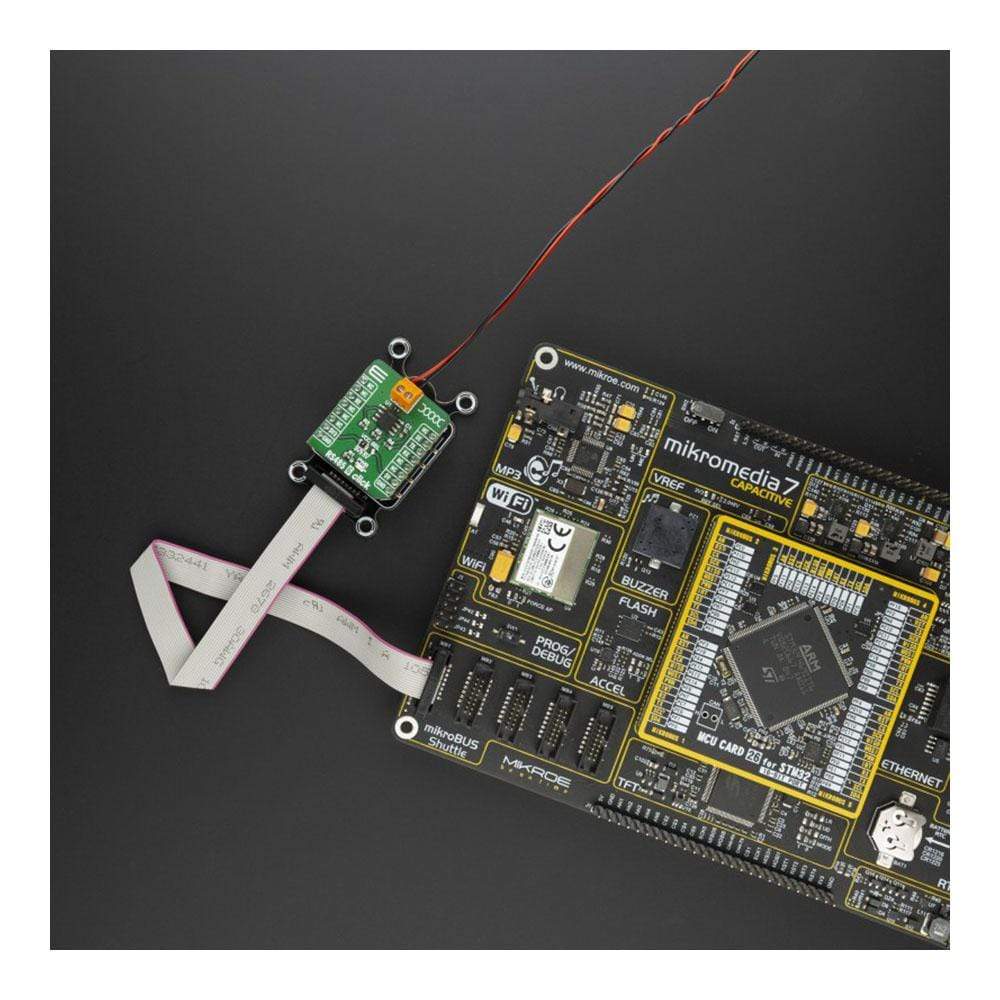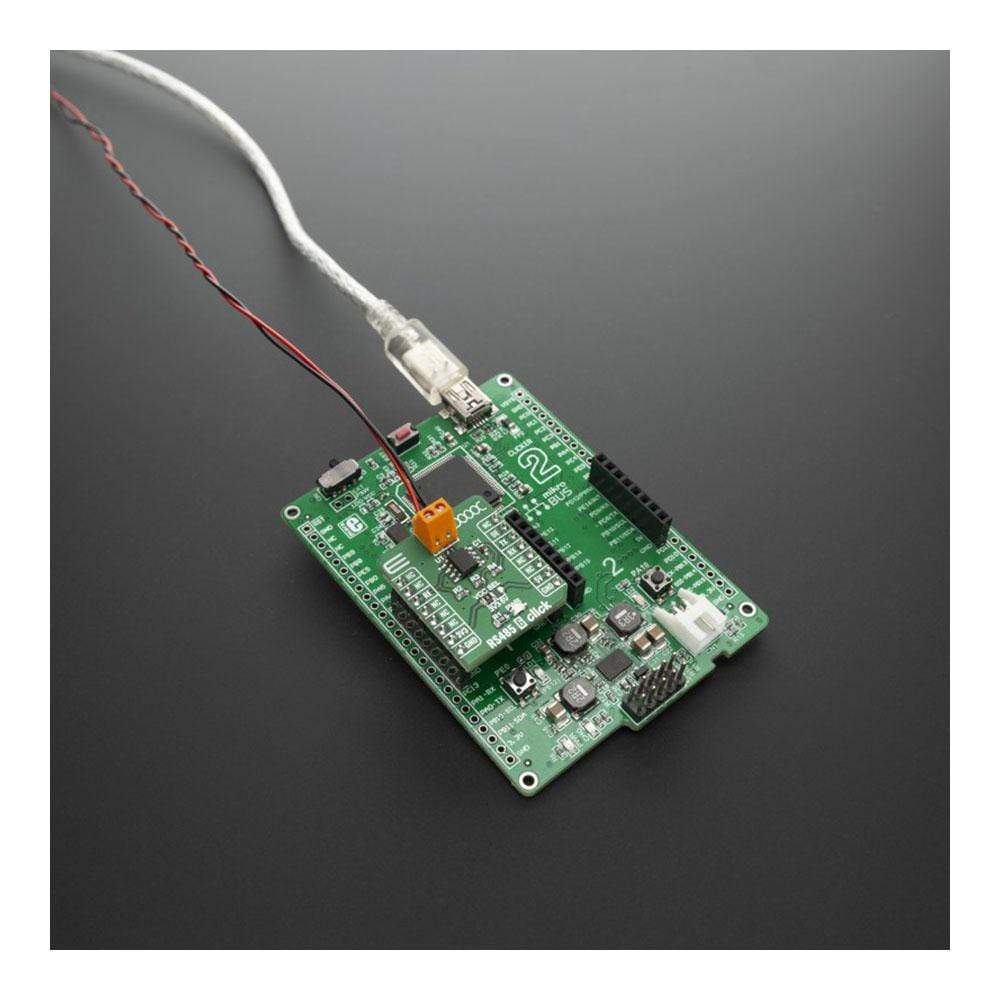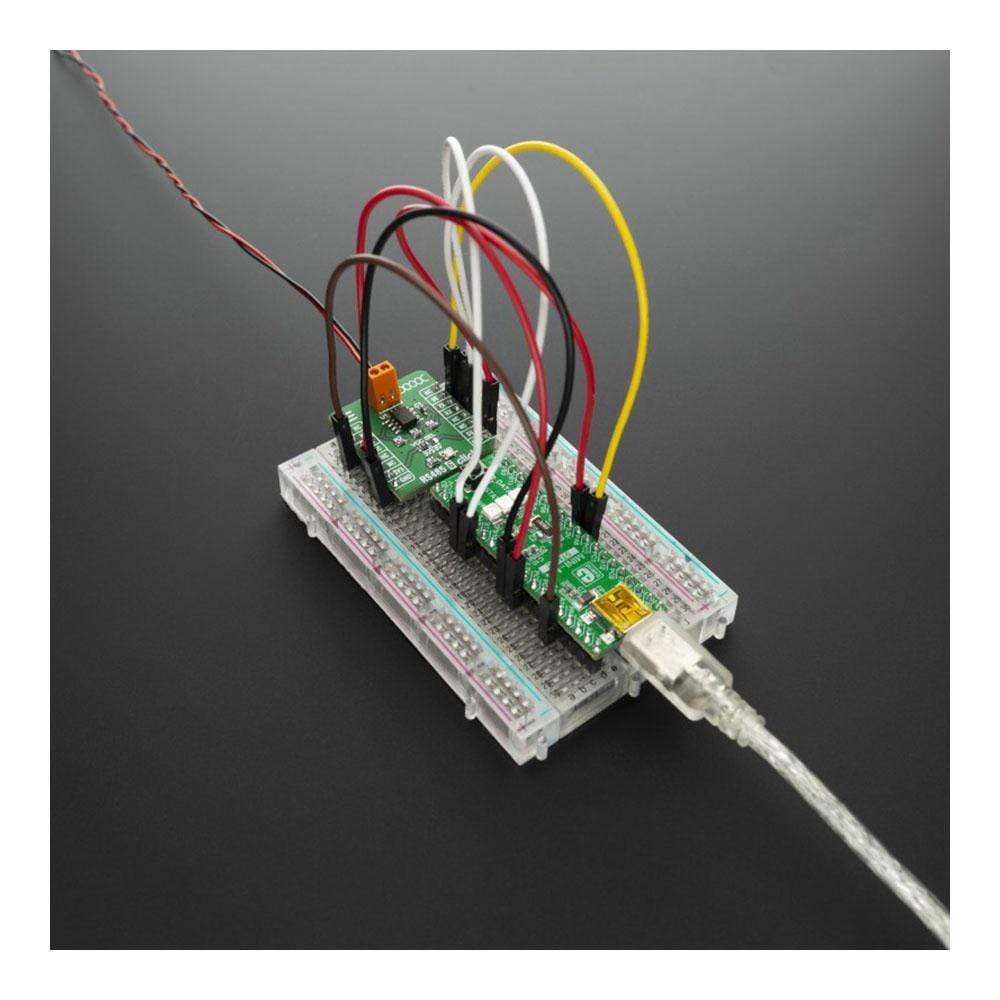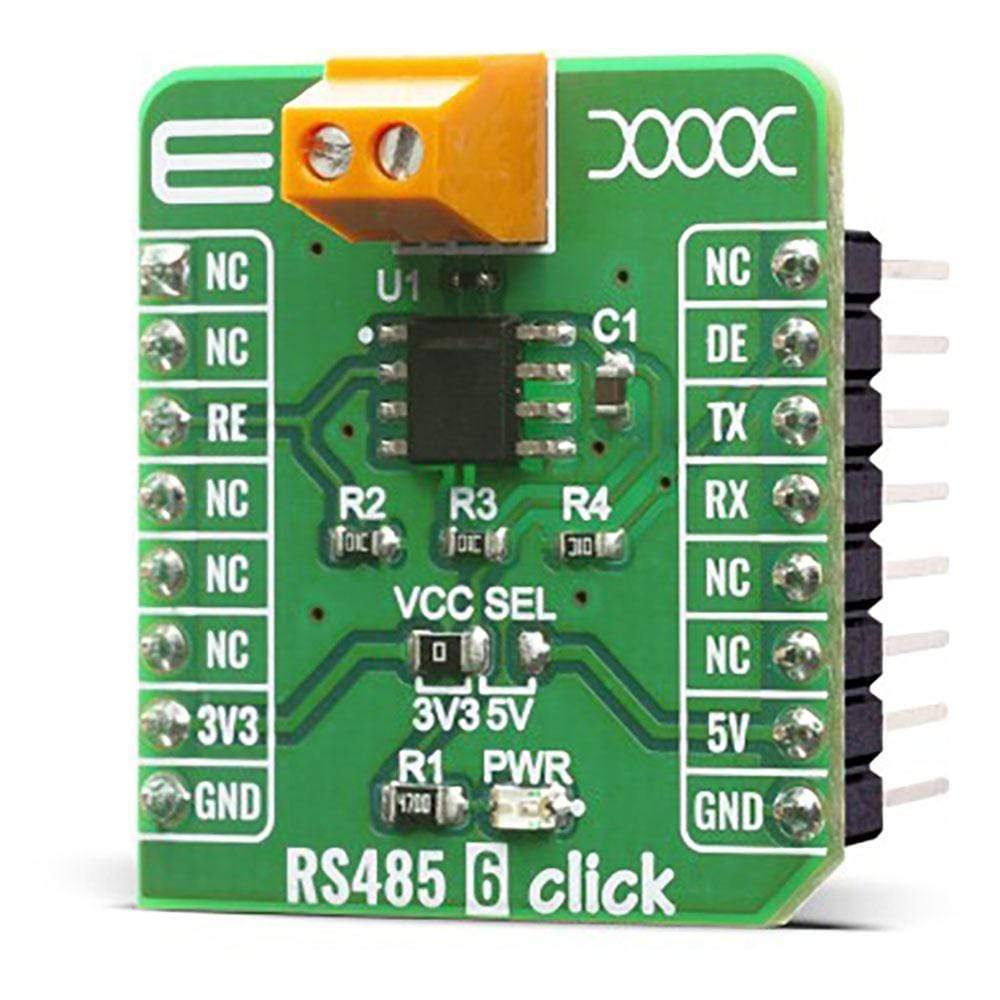
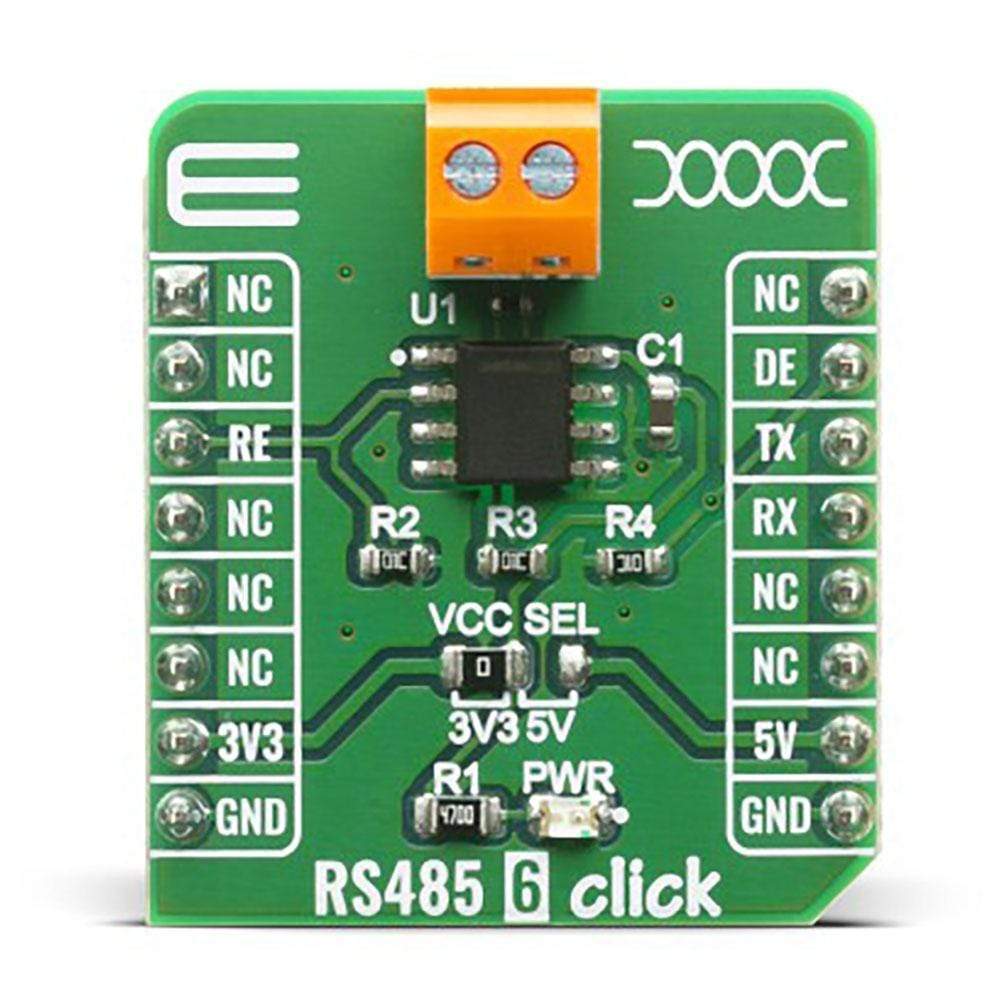
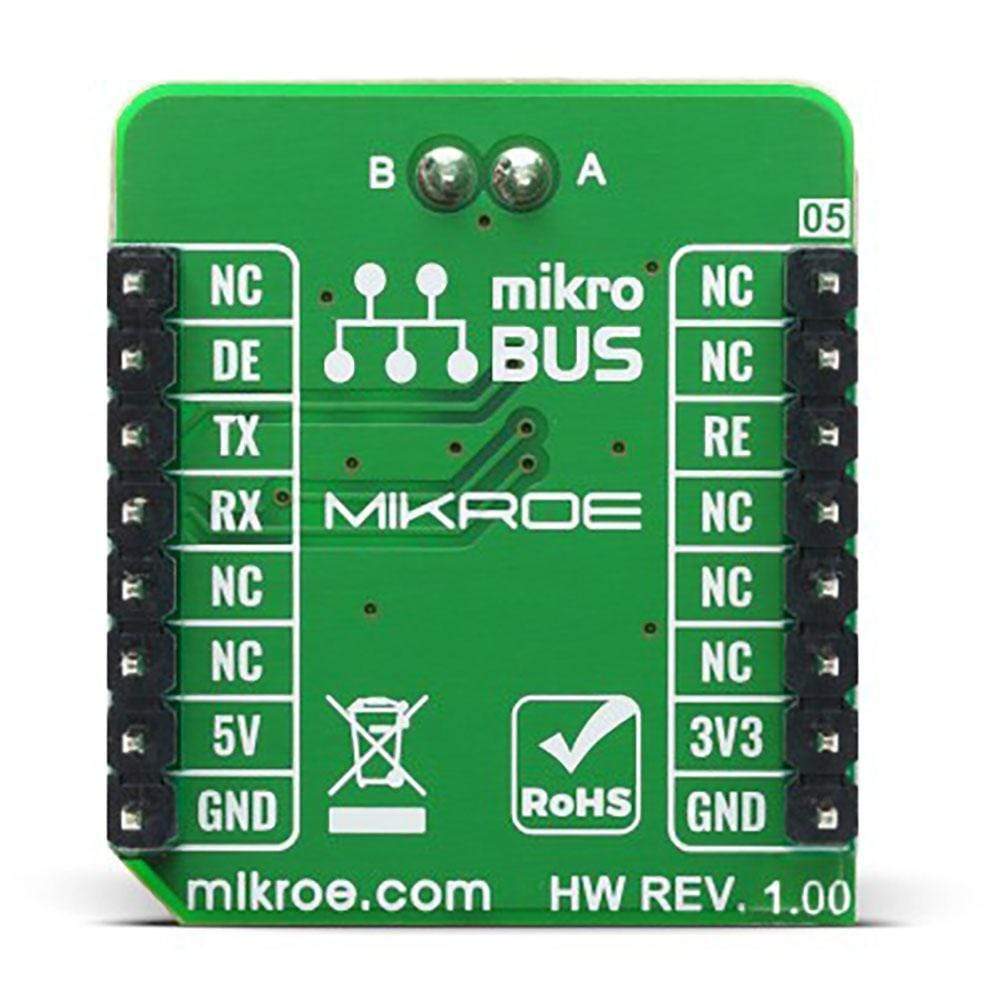
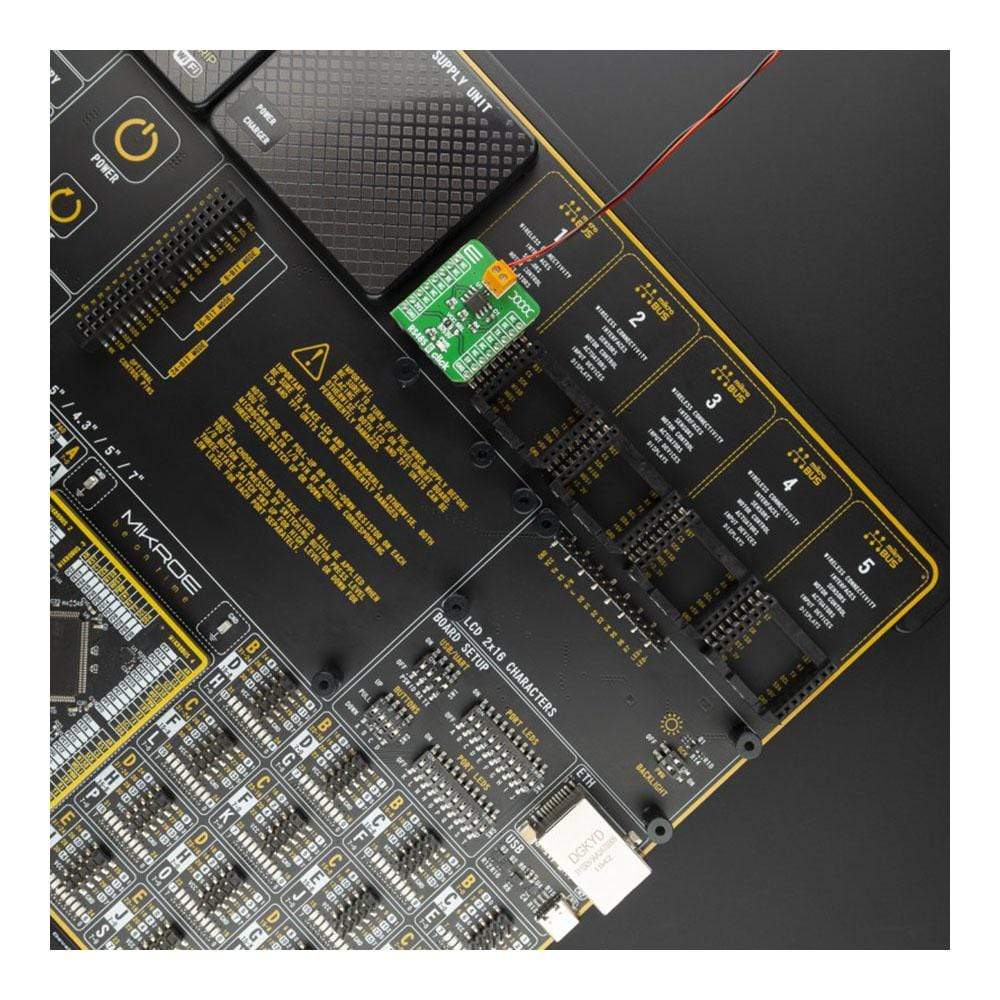
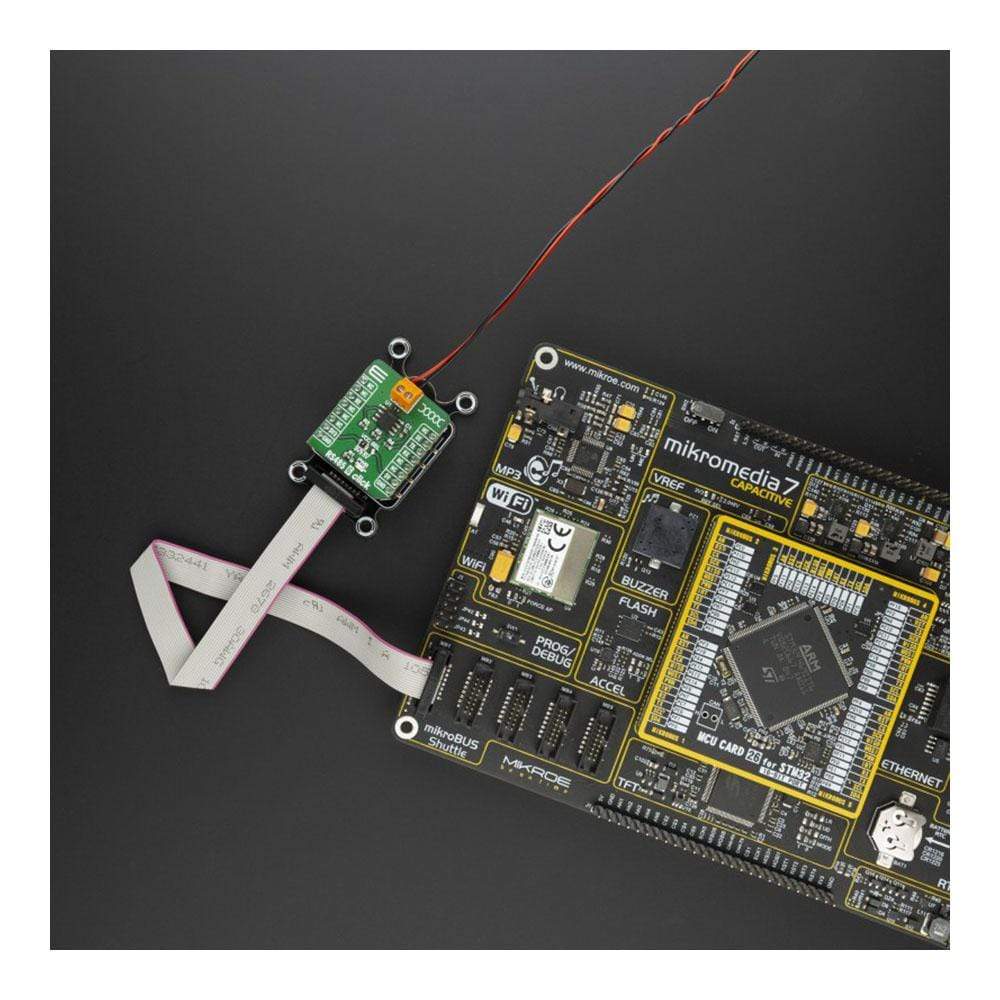
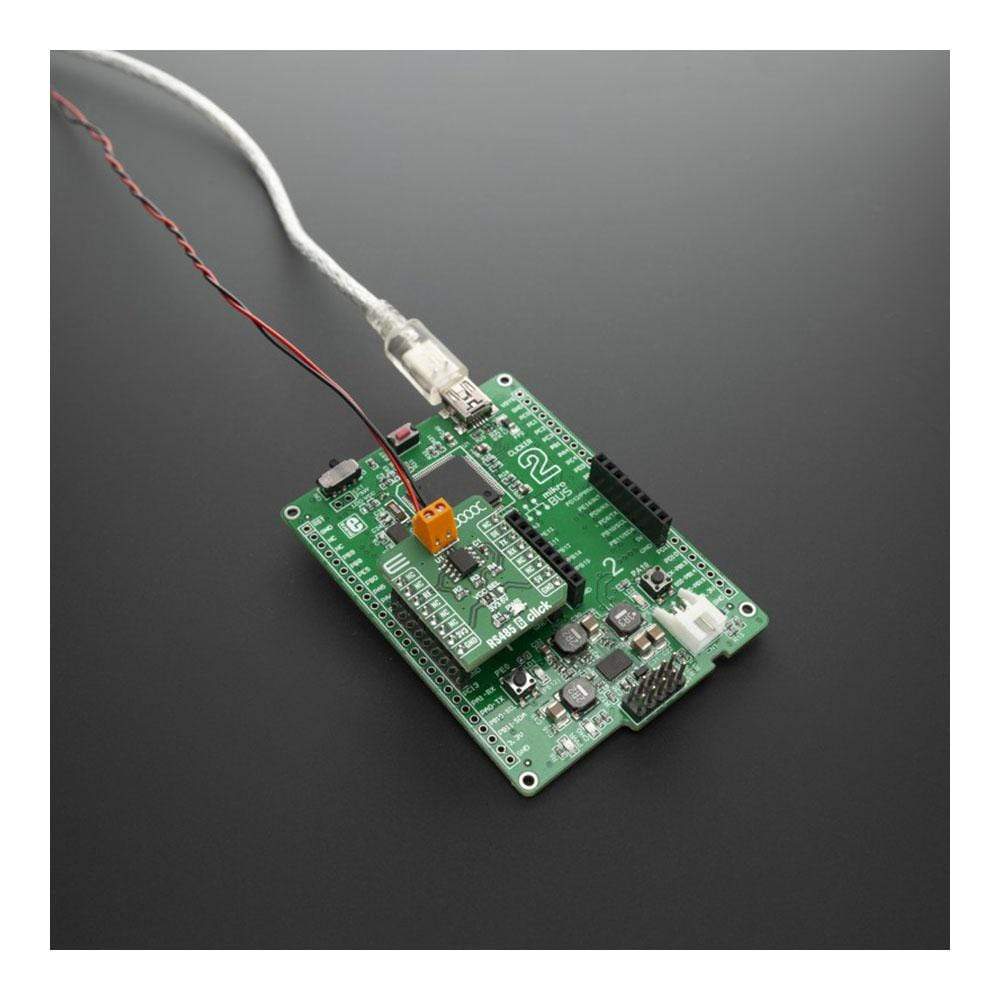
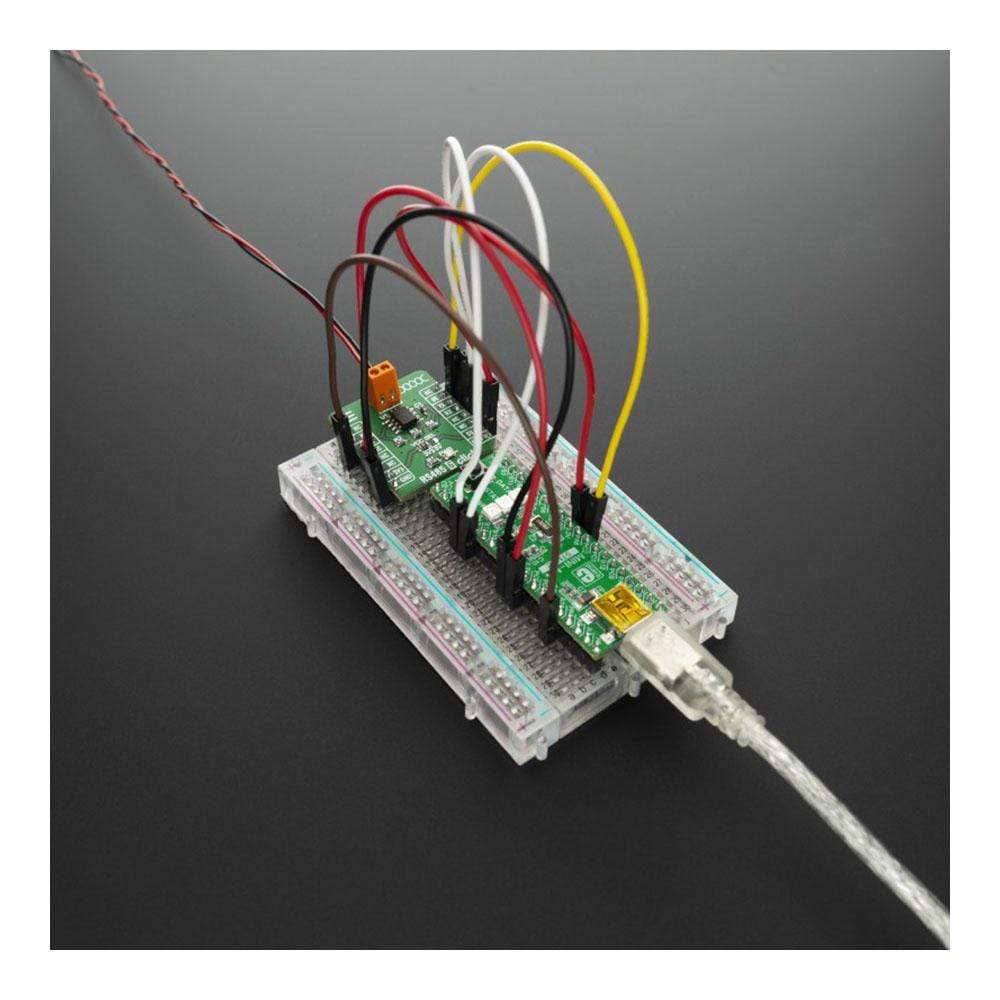
Overview
The RS485 6 Click Board™ offers a half-duplex RS-485 communication with integrated surge protection, which can be used as an interface between the TTL level UART and the RS485 communication bus. It is based on THVD1429DT, a transceiver from Texas Instruments with a signalling rate of up to 20 Mbps. This device features a wide common-mode voltage range from 3.3V to 5V, which makes it suitable for multi-point applications over long cable runs and noisy areas thanks to the integrated transient voltage suppressor (TVS) diodes. This device and type of network is perfectly suitable for wireless infrastructure, building automation, HVAC systems or factory automation, and many more.
The RS485 6 Click is supported by a mikroSDK compliant library, which includes functions that simplify software development. This Click Board™ comes as a fully tested product, ready to be used on a system equipped with the mikroBUS™ socket.
Downloads
Le RS485 6 Click Board™ offre une communication RS-485 semi-duplex avec protection intégrée contre les surtensions, qui peut être utilisée comme interface entre l'UART de niveau TTL et le bus de communication RS485. Il est basé sur le THVD1429DT, un émetteur-récepteur de Texas Instruments avec un débit de signalisation allant jusqu'à 20 Mbps. Cet appareil dispose d'une large plage de tension en mode commun de 3,3 V à 5 V, ce qui le rend adapté aux applications multipoints sur de longs câbles et dans des zones bruyantes grâce aux diodes de suppression de tension transitoire (TVS) intégrées. Cet appareil et ce type de réseau conviennent parfaitement aux infrastructures sans fil, à l'automatisation des bâtiments, aux systèmes CVC ou à l'automatisation industrielle, et bien d'autres encore.
Le RS485 6 Click est pris en charge par une bibliothèque compatible mikroSDK, qui comprend des fonctions qui simplifient le développement logiciel. Cette Click Board™ est un produit entièrement testé, prêt à être utilisé sur un système équipé de la prise mikroBUS™.
| General Information | |
|---|---|
Part Number (SKU) |
MIKROE-3993
|
Manufacturer |
|
| Physical and Mechanical | |
Weight |
0.016 kg
|
| Other | |
Country of Origin |
|
HS Code Customs Tariff code
|
|
EAN |
8606018718429
|
Warranty |
|
Frequently Asked Questions
Have a Question?
Be the first to ask a question about this.

